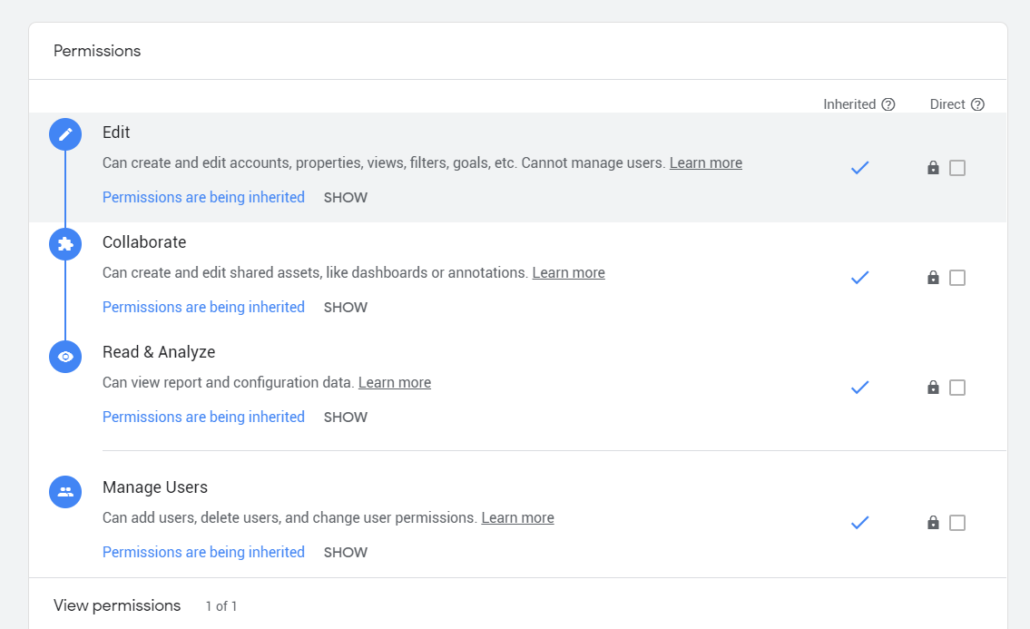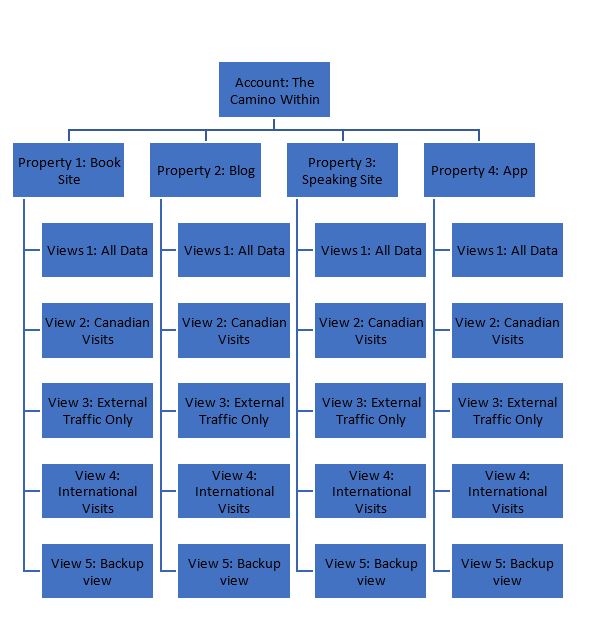What is GA4? How does it work? What is the primary difference between GA3 and GA4? Why should you switch to GA4 now? Read Here!
Why it is Important to Switch to GA 4 Now
Google Analytics is one of the most powerful tools for marketers and companies. It monitors and analyzes website traffic and gives marketers massive amounts of information about web traffic, online users, their preferences, and ways they get to your website.
You can use Google Analytics to expand and grow your company if you run a small business or giant corporation. However, the older version of Google Analytics has a few downsides. For instance, it has limited dashboard capabilities, preventing you from customizing specific reports.
In addition, it also has missing information because it blocks cookies and switches off JavaScript to track visitors’ behavior. So, this leads to under-reporting due to inefficient data tracking.
The good news is that Google has the newer version of Google Analytics 4, also known as GA4. Today’s article will discuss GA4 and highlight reasons to make an informed decision on whether you should switch to GA4. Read on!
What is GA4?
GA4 is an analytic service that enables digital marketers and companies to measure traffic and engagement across platforms, including websites and applications. It is the newest version of Google Analytics and allows marketers and companies to track websites and apps using the same account.
In addition, it comes with cutting-edge reporting features and provides digital marketers with in-depth information and insights. GA4 has an entirely different data architecture, storage, and processing mechanisms than the previous versions.
So, it provides new ways to track, measure, and analyze traffic for years. GA4 also looks different from Universal Analytics, with a changed navigation system and user interface.
Let us discuss why you should switch to GA4, but before that, knowing the difference between GA4 and Universal Analytics is essential. The purpose is to help you make an informed decision and let you understand whether GA4 is better than Universal Analytics.
GA4 Vs. Universal Analytics
Although GA4 is similar to Universal Analytics or GA3, it has massive differences. If you have used the previous version, you will notice various changes in how the newest version looks and how the navigation works.
In addition to the user interface and navigation, GA4 has other differences from the previous version. Google makes substantial efforts to add more reporting capabilities and functionalities to GA4.
For instance, GA4 misses the bounce rate because Google has replaced it with engaging sessions. So, you won’t see the percentage or number of people leaving your website. Instead, you will see data on users who visit your website and stay on it to explore your products and services.
Therefore, the ” Engagement Rate ” is the new metric Google wants marketers and businesses to focus on is the “Engagement Rate.” Moreover, GA4 does not use “goals.” Instead, it uses events, meaning you can track events and conversions.
The good news is that you can choose events that count as conversions. Google will also track events without modifying your website’s code. GA4 also misses historical data. What does this mean?
If you have used Universal Analytics and created a GA4 property, you can’t move the historical data to that property. So, you start from scratch. However, your historical data will remain safe in Universal Analytics.
However, you have to switch to Universal Analytics to analyze the historical data. Let us now discuss the prominent features and benefits of GA4 to help you decide whether to switch from Universal Analytics to GA4.
Reasons to switch to to Switch to GA 4:
1. Access to In-Depth Metrics
GA4 is one of the most powerful analytics tools, allowing marketers, data analysts, and companies to dive into user-centric and in-depth metrics. These metrics usually focus on the Lifecycle and the user.
Besides, GA4 uses user-centric metrics, data, and dimensions using artificial intelligence and machine learning algorithms to predict customer/buyer/users’ actions and implement more S.M.A.R.T tracking with predictive modeling or analytics.
Universal Analytics’ bounce rates have been replaced with more useful and valuable engagement metrics. For instance, when using GA4, an engaged session lasts ten seconds. It has at least one conversion event and involves two page views.
GA4 metrics allow digital marketers to leverage the power of events and measure engagements. It gives you a holistic view of website visitors, actions, and behaviors. The new feature, enhanced events, enables marketers to understand how their website visitors interact with the content. So, you can use “Enhanced Events” to:
- Scroll data
- Download files
- Search about your site
- Video and graphic engagement rates
So, this advanced level of event marketing is more sophisticated because it does not require custom code or a web developer’s assistance. Therefore, you can understand how visitors/users interact with your site, the type of content that compels users to click on CTAs, and what content requires optimization.
2. Track Customer/Buyer Journey
GA4 is an excellent tool to track customer or buyer journeys. The tool does not focus on measurements like fragmentation by device or platform, such as sessions. On the other hand, it focuses on users and their interactions via events.
These events happen across the website and application. For example, you can use GA4 Lifecycle to generate reports that align with different stages of the customer journey, including:
- Acquisition
- Engagement
- Interaction
- Monetization
- Retention
- Loyalty
So, you can use these reports to understand the buyer’s journey. At the same time, these reports enable you to identify gaps and complications and determine opportunities via insights. Thus, you can positively change your marketing strategy and make the most of it.
3. Quick Big Query Integration
Big Query is one of the most famous data warehouses. It helps you track, manage, and analyze data and has built-in features that can improve your overall business processes. These features are:
- Machine learning
- Geospatial analysis
- Business intelligence
So, you can use Big Query and SQL to answer complex questions without deploying the infrastructure management. GA4’s integration with this data warehouse allows you to analyze massive datasets quickly.
At the same time, it performs advanced analysis of large volumes of raw data from GA4 and helps you generate valuable insights via machine learning algorithms. Similarly, you can combine data with these insights from other marketing and customer relationship management (CRM) tools. The purpose is to create a repository that gives insights into the customer/buyer journey.
4. Create Targeted Segments
GA4 enables you to create targeted segments for your digital marketing campaigns. You can create segments based on various factors, such as events and time, allowing you to group users based on interactions, events, and time. Remember, this also focuses on events and arbitrary device categories.
When you leverage the power of these measurements and analytics, you can create precise and targeted audiences with a complete picture of who is using your web pages and how they engage with your content. The purpose is to create endless possibilities and lead to more optimized conversions and sales.
Moreover, one of the most significant benefits of GA4 is that it automatically shares audiences with Google Ads. Thus, you can focus on paid advertising campaigns for website visitors who follow a specific behavior pattern.
When you have more targeted audiences, you can optimize campaigns and reach your audiences at the right time. More sophisticated marketing campaign strategies and audiences can generate higher ROIs.
5. Automatic Alerts
GA4 uses machine learning algorithms and models designed and developed by experienced professionals working in Google. Thanks to machine learning algorithms, you can receive automatic alerts when trends appear in the data. For instance, if your business sells more of a specific product, GA4 will let you know before you see an increased number of sales.
So this enables you to respond fast and contact suppliers to keep the product in stock. GA4 also helps marketers and businesses to predict behavior among specific customer groups.
For instance, the tool creates models that can measure the potential revenue of a customer group. It also calculates churn probabilities of different customer/user/visitor segments.
6. Realistic Marketing Campaigns
GA4 is one of the best ways to create realistic marketing campaigns because it helps you unify your website and app data. GA4 also provides a future-proofed solution even if you don’t have an application. However, this is valuable if you have planned to develop an app in the future.
In addition to synchronizing your website with app data and analyzing customer journeys across platforms, GA4 enables you to analyze user behavior by their position in the purchasing funnel based on factors like awareness and conversion.
A better understanding of how customers/visitors/users behave at different stages allows you to create a more sophisticated marketing strategy. For instance, if you notice that your product sales are due to a coupon or discount strategy shared on Facebook or Instagram, you can invest more on these social networking platforms.
7. Future-Proof Design and Privacy
Future-proof design is one of the most significant advantages of GA4. It focuses on user privacy because it moves away from cookie-based tracking. Therefore, switching to and using GA4 is an excellent way for marketers and businesses to streamline their data operations.
GA4 provides you with sophisticated solutions without depending on cookies. Although Google recognizes that some data gaps may occur with this approach, the company makes substantial efforts and uses accurate modeling techniques to overcome these complications.
8. Leverage the Power of Explorations
“Explorations” is one of the most powerful features offered by the newest Google Analytics. It accommodates specific goals and lets marketers create reports via data visualization and analytical techniques.
Although Universal Analytics has a similar feature, it requires marketers and businesses to pay money using Google Analytics 360 users. However, this is a free feature with GA4.
In addition, “Explorations” allow you to track content, research audiences, and optimize conversion rates to the next level. You will find ready-made “Explorations” in the template gallery. These templates/explorations can help you analyze specific marketing areas, including:
- Funnel performance
- User segment overlaps
- Lead acquisition performance
- User cohorts behavior
- User lifetime value
Getting Started With GA4
Although switching to GA4 from the previous version of Google Analytics is daunting for many businesses and digital marketers, it is worth your time because it streamlines your online data and provides you with tools to create realistic, user-oriented, and time-bound marketing campaigns.
There are a few ways to get started with GA4. For instance, you can add GA4 to your website that you currently analyze with the older version. So, if you are familiar with the previous version, you can use this option to streamline the entire process.
Google’s setup assistance adds the GA4 property to the already existing one. Bear in mind that the older platform will collect data until July 2023. So, you can switch between the older and newer version based on your needs.
If you need help getting started, feel free to connect t@rimanagency.com
Final Words
Companies collect user/customer data from various channels, including websites, apps, eCommerce platforms, and social media. GA4 is a cutting-edge tool to create comprehensive customer profiles using the collected data, gain insights into users’ behaviors, and provide more personalized experiences to your customers using effective, reliable, and user-oriented marketing campaigns.
If you find it challenging to get started with GA4, you can hire Riman Agency to streamline the process. We have a team of qualified, experienced, and skilled data analysts and digital marketers with an in-depth understanding of GA4. Contact us today for more information or discuss your requirements with our professional team. Until Next Time!





















